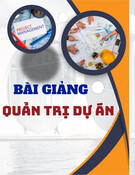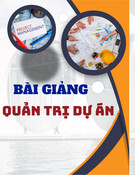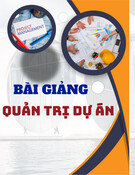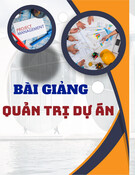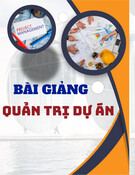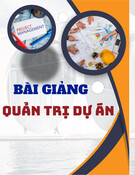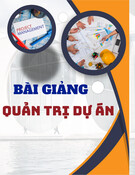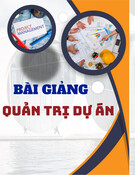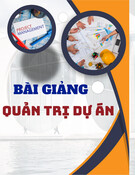
Vol. 6, 2020A new decade for social changeswww.techniumscience.com9772668779000ISSN 2668-7798

Exploration of Leadership, Organizational Culture,
Job Satisfaction, and Employee Performance
Purwadi1, Dio Caisar Darma2, Widya Febrianti3, Dedy Mirwansyah4
Department of Management, Faculty of Economics and Business, Mulawarman
University, Samarinda, Indonesia1, Department of Management, Samarinda High
College of Economics, Samarinda, Indonesia2, Department of Management, Faculty of
Economics and Business, Mulawarman University, East Kalimantan, Indonesia3,
Department of Information System, Faculty of Computer Science, Mulia University,
Samarinda, Indonesia4
purwadi@feb.unmul.ac.id1, diocaisar09@gmail.com2, widyafebrianti98@gmail.com3,
dedy.m@universitasmulia.ac.id4
Abstract. The purpose of the organization is to obtain maximum results and also pay attention
to performance in the process of these objectives. The description of the research aims to
explore the relationship between leadership and organizational culture on job satisfaction and
employee performance. The independent variables of this research are leadership and
organizational culture. Meanwhile, job satisfaction and performance are included in the
dependent variable. This research was conducted at the Department of Transportation
(Samarinda City) consisting of 83 respondents. Research is descriptive and quantitative. Data
collection by questionnaire by testing the leadership and organizational culture on performance
and moderated by the variable job satisfaction. Data analysis uses the Partial Least Square
(PLS) technique. Empirical findings indicate that leadership and organizational culture have a
positive and significant effect on job satisfaction. Leadership and organizational culture have a
positive and significant impact on performance. On one hand, the results of the study also
showed that job satisfaction had a negative and not significant effect on performance.
Researchers who have a focus on the variables in this study, in order to be able to use the
criteria for selecting more respondents and more detailed in the future.
Keywords. Leadership, Organizational culture, Job satisfaction, Employee performance.
1. Introduction
Human resource management is a field of management that studies the relationships
between people in organizations. In essence, studying the relationship with human resources.
The purpose of the organization is to obtain maximum results and also pay attention to
performance in the process of these objectives.
The quality of human resources determines the success of an organization. Quality
human resources have excellent physical and mental psychological elements so as to improve
the performance of employees in improving their performance. Performance is a result or
overall level of success of a person during a certain period in carrying out the task compared
with various possibilities, such as work standards, targets or targets criteria that have been
116
Technium Social Sciences Journal
Vol. 6, 116-130, April 2020
ISSN: 2668-7798
www.techniumscience.com

determined in advance and agreed upon together (Rivai, 2005). The theory of job
characteristics is an attempt to identify the job characteristics of the job, how these
characteristics are combined to form different jobs and their relationship with employee
motivation and performance (DeCenzo, & Robbins, 1996; Purwanto & Soliha, 2017).
Performance is the achievement of one's work achieved in the organization, in
accordance with the responsibilities given in an effort to achieve goals. With this definition, it
can be said that employees play an important role in carrying out organizational activities in
order to develop properly (Sedarmayanti, 2007).
Efforts in improving employee performance, leadership need to be considered as well.
A good leader must be able to improve the performance of his employees, the leader must also
be able to influence and direct the activities of his group members, in order to achieve
common goals. Good leadership is leadership that can provide encouragement to
subordinates. Leadership is someone who can determine strategy, able to make plans, and can
be a motivator for subordinates so that they can produce effective and efficient performance
(Uha, 2013).
In addition to leadership, the success of an organization in achieving its goals can also
be influenced by the culture of the organization. Organizational culture is a pattern or system,
values, behaviors, and culture that is embedded in a group of people like the personality of the
group of people in the organization and becomes a differentiator with other organizations.
Organizational culture is the perception adopted by members of an organization as a system of
organizational values which then influences the way it works and behaves from members of
the organization, the value system is able to distinguish one organization from another (Busro,
2018).
In addition to organizational culture, job satisfaction also affects employee
performance where job satisfaction is an employee's pleasure in carrying out the tasks
assigned to him. Job satisfaction is a feeling of pleasure at work that is produced by
evaluating its characteristics. With attention to leadership and organizational culture, job
satisfaction will arise in the organization which will improve the performance of each
individual employee. So, with increasing job satisfaction of employees, employee
performance will be better. Performance is the result of employee work that has been achieved
in accordance with the responsibilities given (Robbins & Judge, 2017).
Employee job satisfaction is a major concern and the organization must know exactly
how to increase employee job satisfaction and anything that can affect job satisfaction.
Therefore, employees in the Department of Transportation (Samarinda City) become planners
and controllers who play an active role in achieving organizational goals. Employees become
actors who help achieve goals, have thoughts, and desires that can influence these attitudes to
work. The emotional involvement of an employee with his work will lead to happy and active
behavior in carrying out the duties and obligations assigned to the employee, it will stimulate
and lead to positive performance improvement and a good impact on the organization and the
achievement of work results. However, the current conditions in the office of the Department
of Transportation (Samarinda City), there are still employee dissatisfaction about the
development policies both on promotion, transfer, and opportunities for promotion given by
the organization, and the lack of communication opportunities between superiors and
subordinates, lacking the creation of communication space in technical meetings, as well as
the lack of intensive coordination and communication meetings between superiors and
subordinates. Some employees tend to be lazy at work. They are more likely to complete a job
if the situation is urgent.
In connection with the phenomenon of the problem, the purpose of this study is to
117
Technium Social Sciences Journal
Vol. 6, 116-130, April 2020
ISSN: 2668-7798
www.techniumscience.com

exploit the relationship of leadership and organizational culture to job satisfaction, and the
relationship of leadership, organizational culture, and job satisfaction to employee
performance in the Department of Transportation (Samarinda City).
The benefits that can be generated from this research are as follows: (1) As a means of
practicing the theories that have been obtained during lectures so that the writer can add
knowledge about the problem at hand; (2) The results of this study are able to contribute ideas
that can be used as consideration for the Department of Transportation (Samarinda City) in an
effort to improve employee performance; and (3) It is expected to be able to assist the
learning process and the application of management science knowledge, particularly in the
field of human resources and be used as a reference for further research on similar topics.
2. Concept and Hypothesis Development
2.1.Relationship of Leadership, Organizational Culture, Job Satisfaction, and
Employee Performance
Leadership is one of the factors that influence job satisfaction. The nature of the leader
can affect the satisfaction and performance of subordinates (Yukl, 2013). The study of Made
Suprapta et al. (2015) says there is an influence between leadership on employee job
satisfaction.
Organizational culture has been considered as one of the important core competencies
of an organization. Employee satisfaction reflects the psychological state of individuals who
work in an organization. Organizational culture can support the achievement of job
satisfaction and organizational goals (Zhang & Bing, 2013). Research by Amilia et al. (2014),
there is an influence between organizational culture on job satisfaction. There is an influence
between leadership and employee performance (Suardi et al., 2016). Then, Asmarazisa (2016)
states that there is an influence between leadership and performance.
Organizational culture can shape employee personality. These personalities will shape
employee behavior in doing work. Research conducted by Sulistiawan et al. (2017) states that
there is an influence between organizational culture and employee performance. Job
satisfaction affects employee performance (Cahyana & Jati, 2017). In the research of Suwardi
& Utomo (2011), there is an influence between job satisfaction and performance.
2.2.Conceptual Framework
A framework of thought is a part or step that is made to make it easier and clearer in
seeing and identifying the problem under study. Framework for thinking from this research.
can be seen in Figure 1.
Figure 1. Research design
118
Technium Social Sciences Journal
Vol. 6, 116-130, April 2020
ISSN: 2668-7798
www.techniumscience.com

Under the theoretical basis and current research as a basis for thinking in taking and
analyzing data that will be tested for truth, then to obtain a temporary answer to a problem
that can be taken as a hypothesis as follows:
H1: Leadership influences job satisfaction in the Department of Transportation
(Samarinda City).
H2: Organizational culture influences job satisfaction at the Department of
Transportation (Samarinda City).
H3: Leadership influences employee performance at the Department of Transportation
(Samarinda City).
H4: Organizational culture influences employee performance at the Department of
Transportation (Samarinda City).
H5: Job satisfaction affects the performance of employees at the Department of
Transportation (Samarinda City).
3. Methods
3.1.Measurement
For this study, the variables used are Leadership (X1) and Organizational Culture (X2)
are independent variables, while Job Satisfaction (Y1) and Employee Performance (Y2) are
dependent variables. To explain what the indicators are used in research, the authors try to
explain the concepts that have been explained operationally and are defined as follows:
Table 1. Detailed explanation of research variables
Variable Type
Name (Symbol)
and Explanation
Indicators
Independent
Leadership (X1),
is the ability of the Head of
the Department of
Transportation (Samarinda
City) to influence and
motivate his employees to
achieve a common goal in
a planned manner.
1. Characteristics and personality, Head of Office have
behavior.
2. Optimism, the ability of the Head of Office to be himself
and always struggle with what he wants.
3. Skills, the Head of Office has expertise that can later be
used in making a decision.
4. Integrity, quality of the Head of Office who is honest,
authoritative, and trustworthy.
5. Influence, the Head of Office can give good influence to
the employees.
Organizational Culture
(X2), is the value and
behavior of the employees
of the Department of
Transportation (Samarinda
City) related to the
experience of each
employee in the agency.
1. Taking risks, Office employees are ready to take risks at
work.
2. Results orientation, Office employees are required to
pay more attention to results.
3. Orientation of people, the Office's decision in
calculating the results of the employees at the Office.
4. Aggressiveness, the extent to which Office employees
look more aggressive in competing than being relaxed.
5. Stability, balance between activities and the growth of
Office employees.
Dependent
Job Satisfaction (Y1), is a
feeling of pleasure felt by
employees of the
Department of
Transportation (Samarinda
City) for the achievement
of the work that has been
done.
1. Payments (salaries), remuneration received by Office
employees.
2. Work, which is challenging for Office employees who
provide learning opportunities.
3. Promotion, a process of change for Office employees to
promote new positions.
4. Supervisor, Head of Office directs employees to work
well.
119
Technium Social Sciences Journal
Vol. 6, 116-130, April 2020
ISSN: 2668-7798
www.techniumscience.com


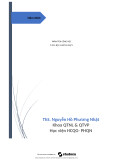

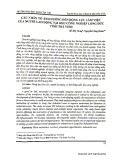
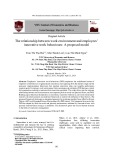
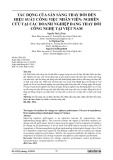

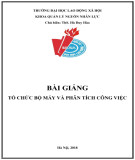
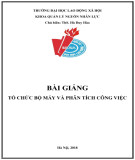

![20 câu hỏi Quản lý dự án phần mềm có đáp án [mới nhất]](https://cdn.tailieu.vn/images/document/thumbnail/2025/20251003/hieu2004haha@gmail.com/135x160/78791759734259.jpg)
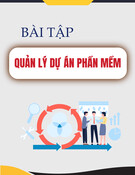

![Tài liệu Quản lý dự án: Kiến thức nền tảng toàn diện [chuẩn SEO]](https://cdn.tailieu.vn/images/document/thumbnail/2025/20250910/kimphuong1001/135x160/92631757496585.jpg)


